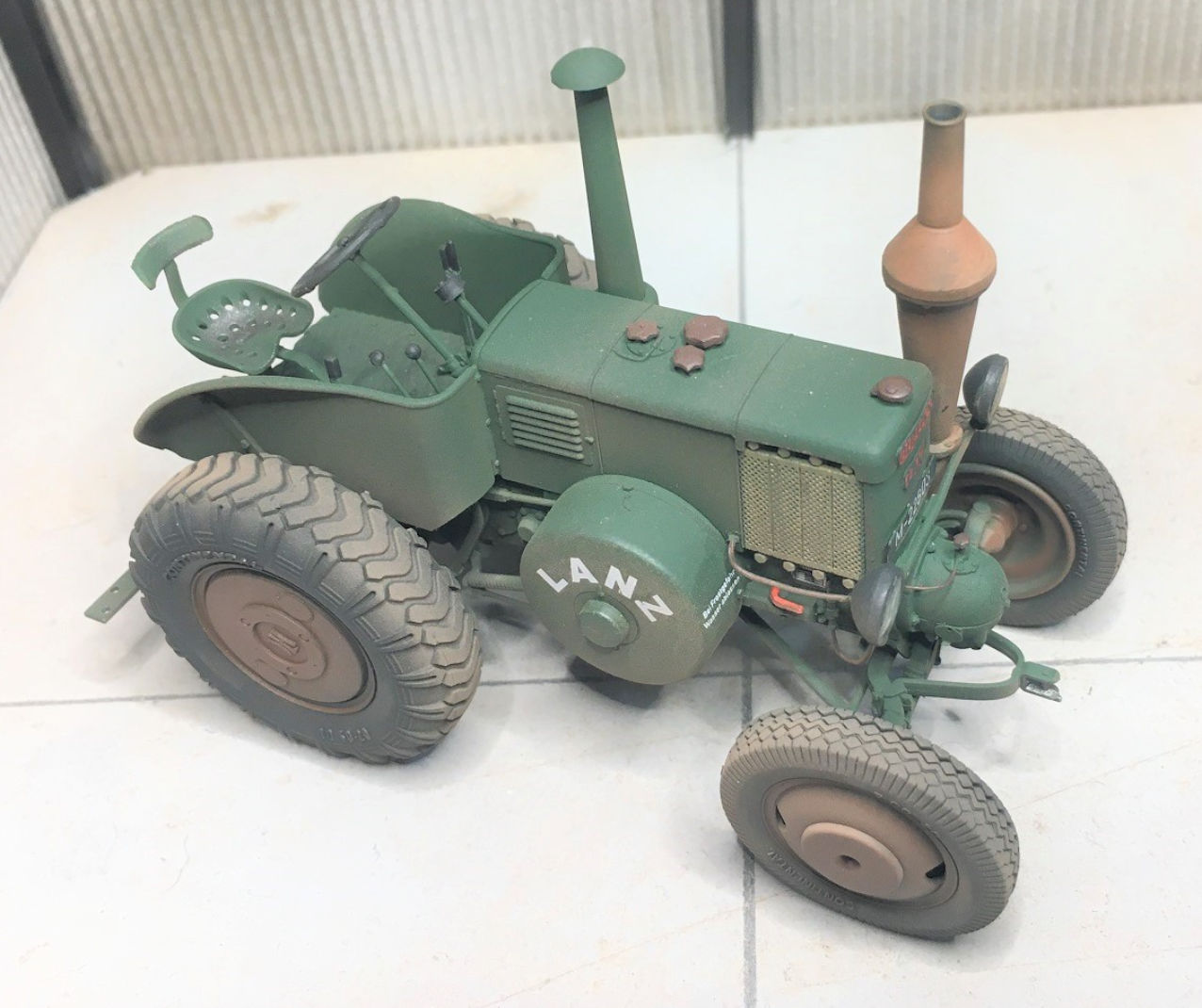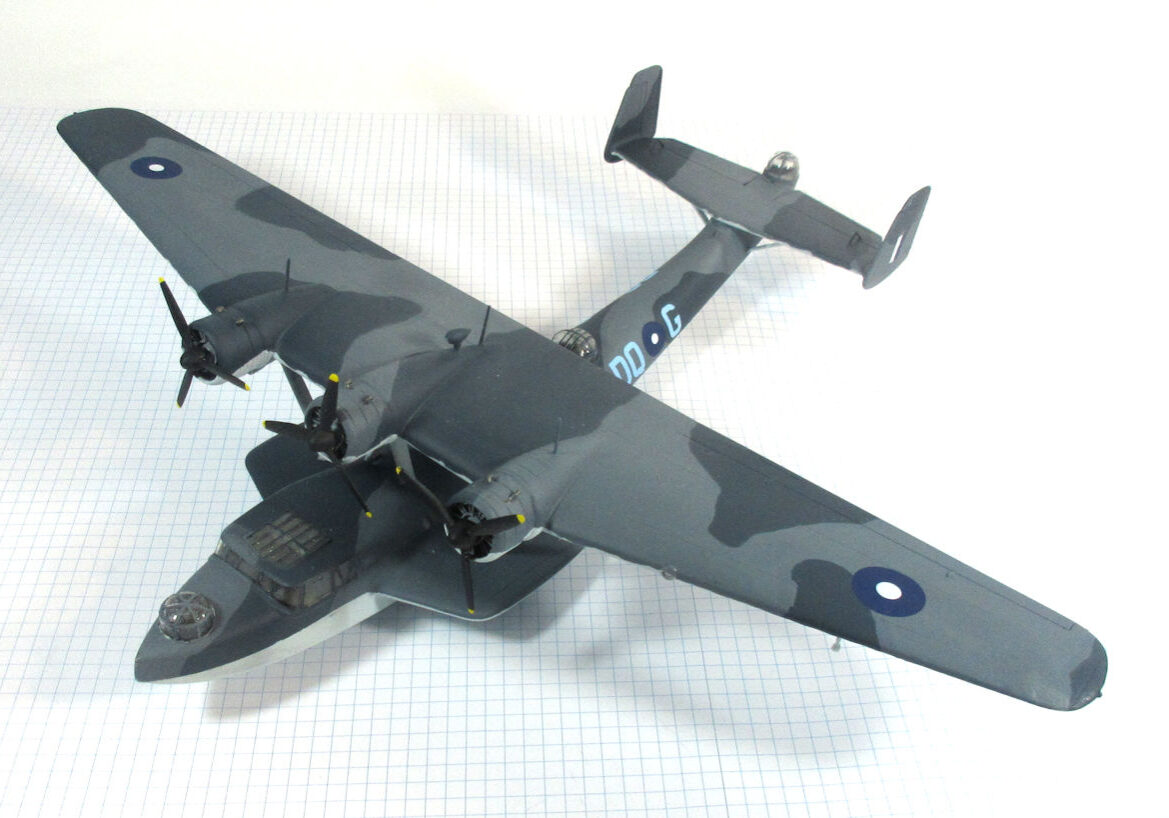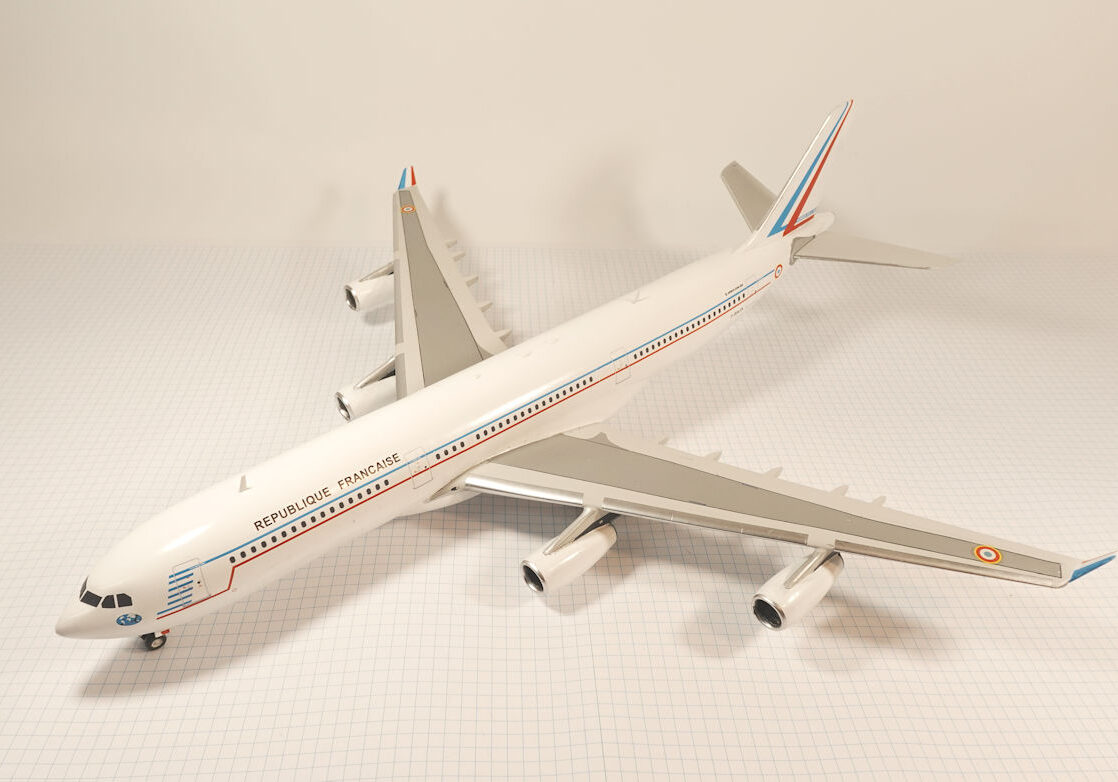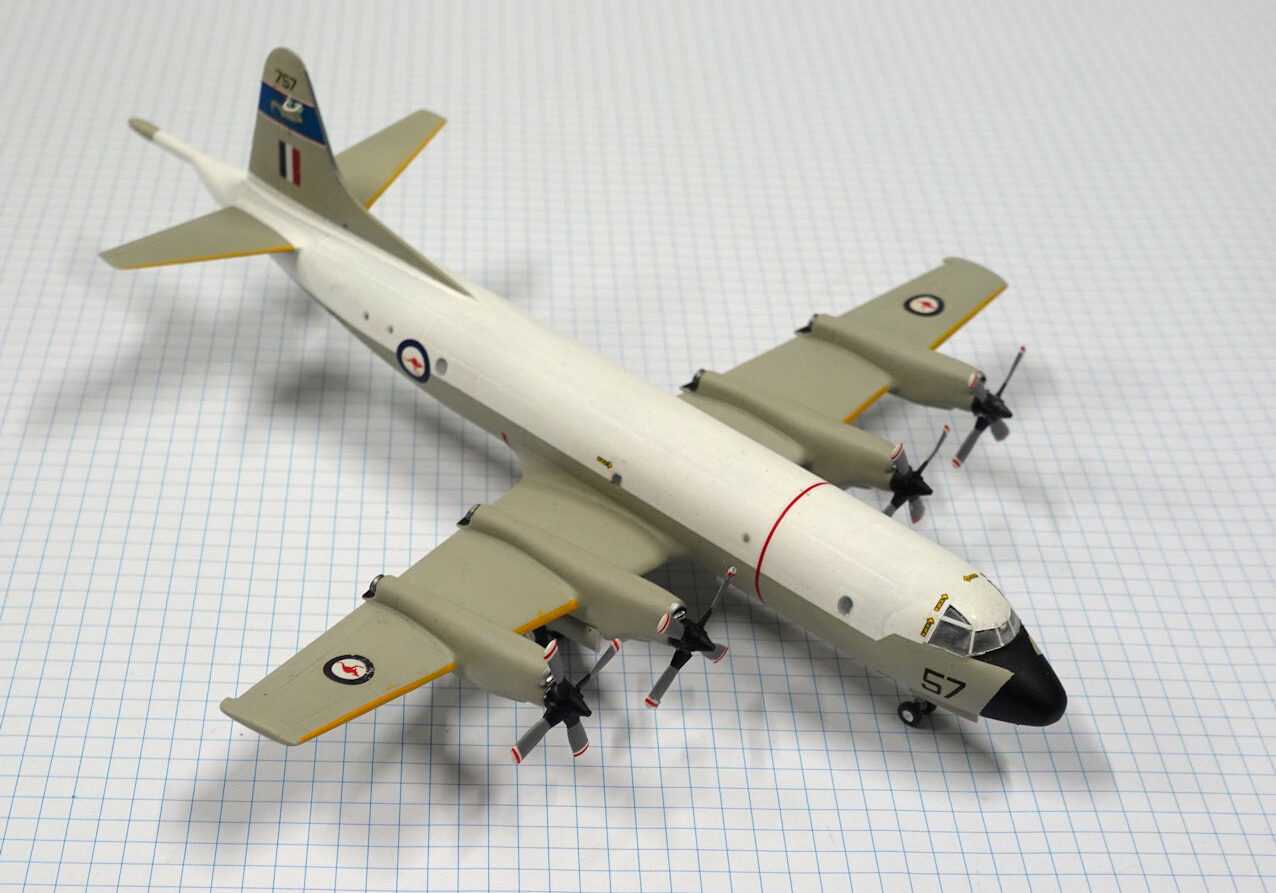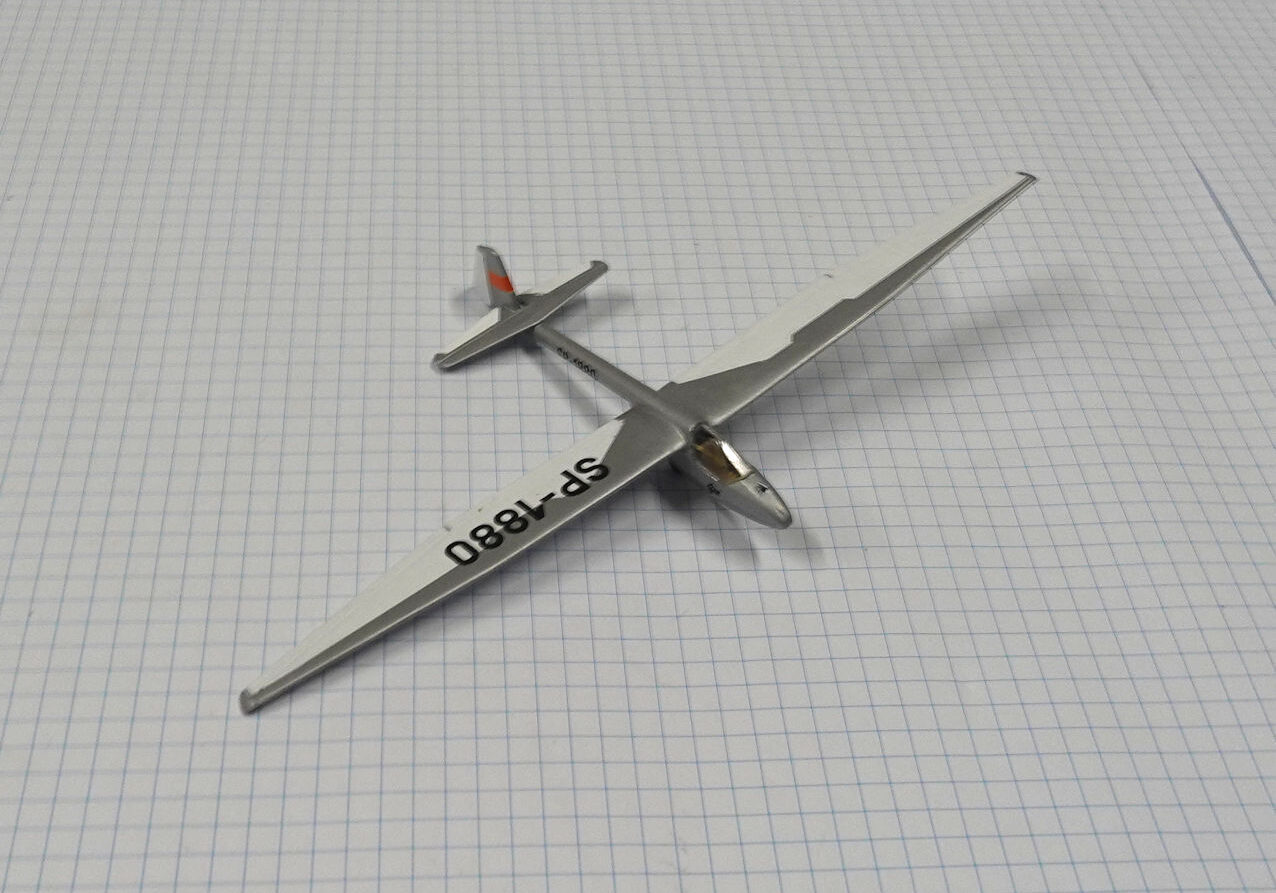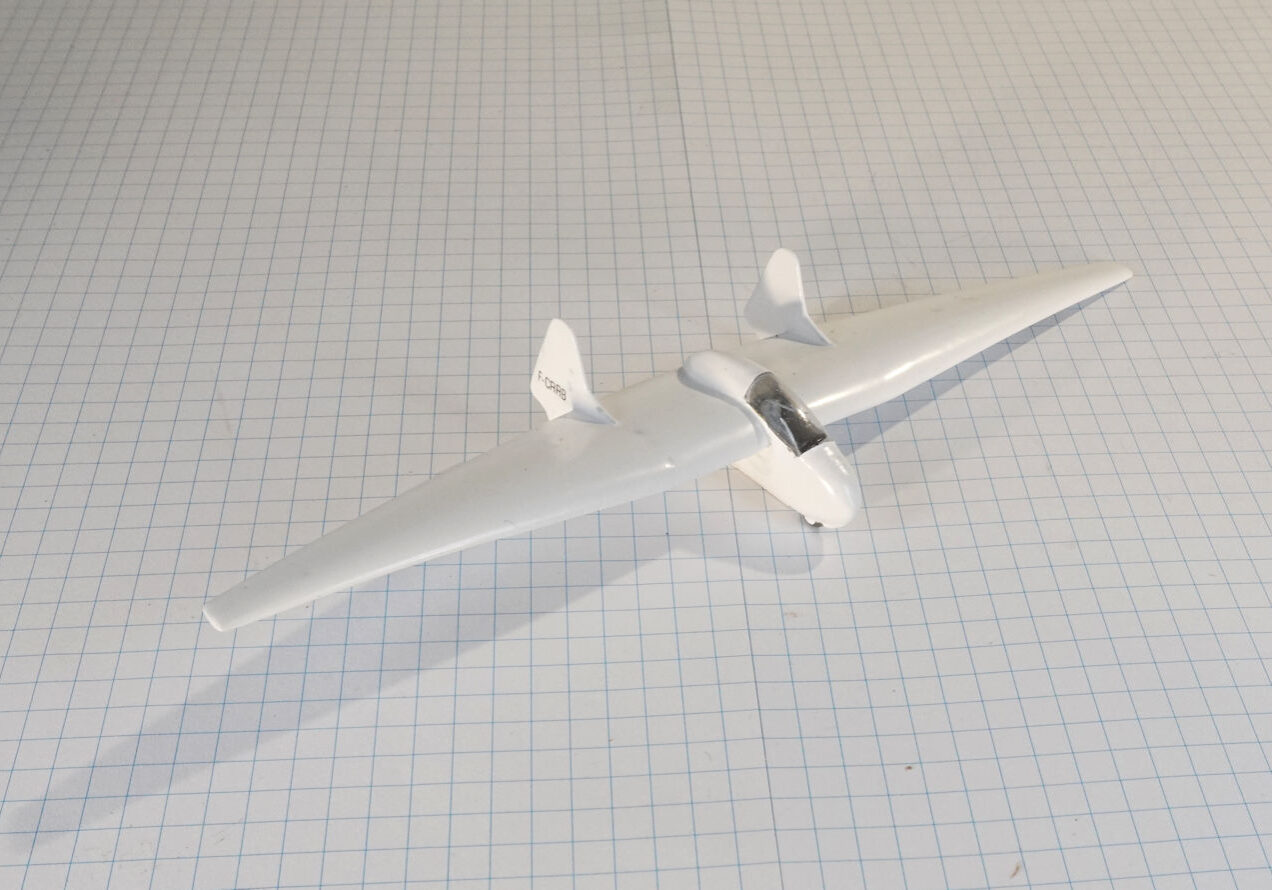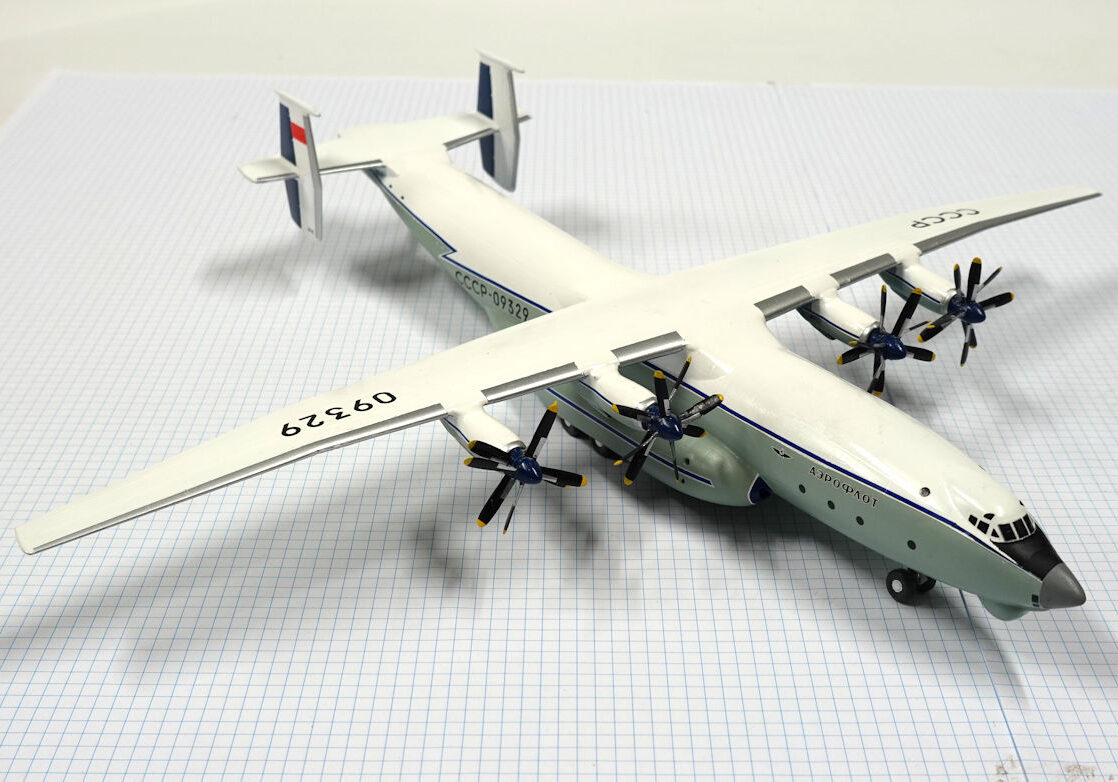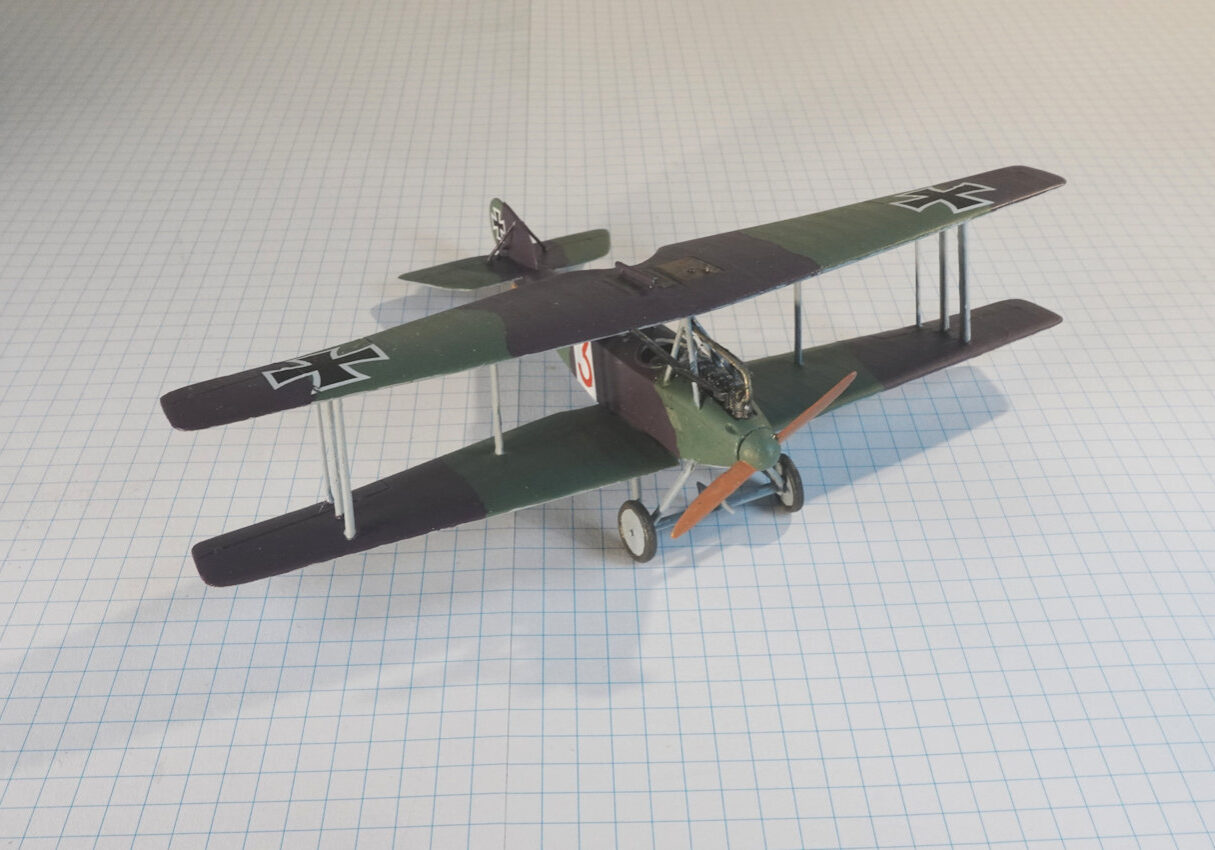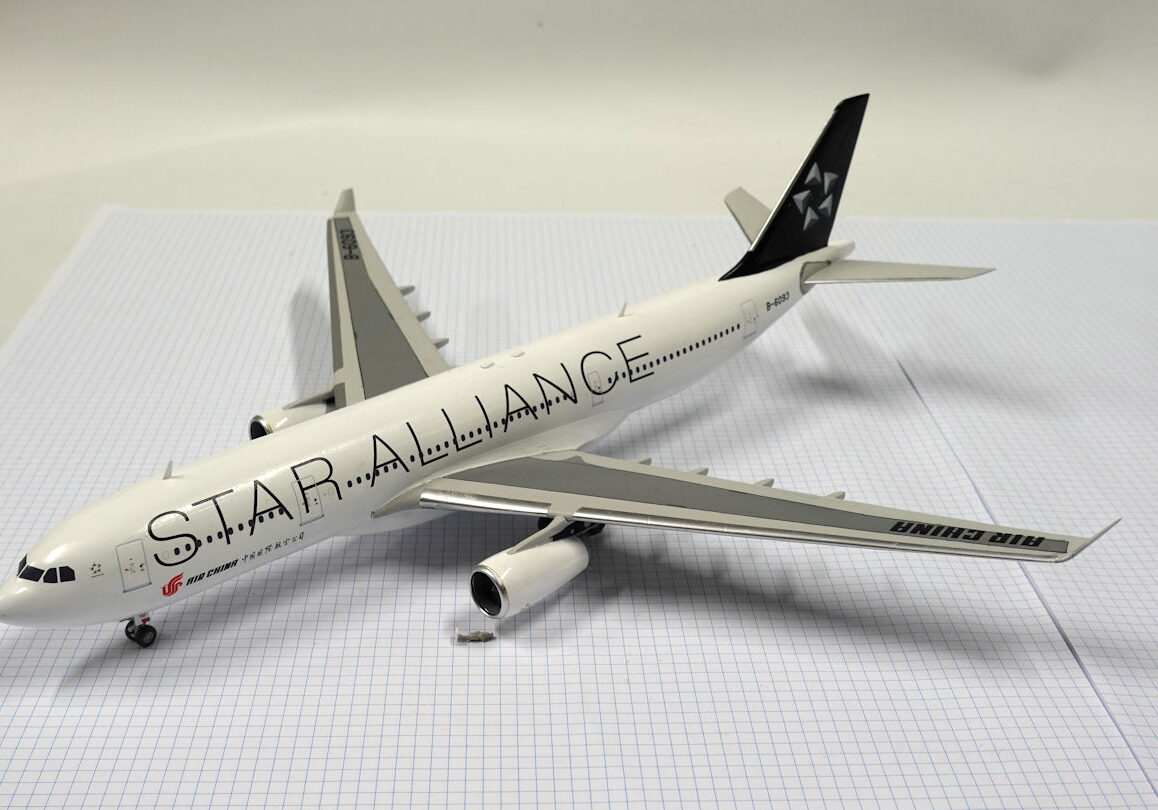History
1/35 MiniArt model by Steve Pulbrook
Want to hear my German farmyard impressions? Of course you do. ‘Helmut, gettun zi off der radschlepper!!!’ he shouts. Okay, bad joke, but if it was Germany before 1960, chances are that the radschlepper in question was a Lanz Bulldog.
The Bulldog was built from 1921 through to the late 50s with about 220,000 built in about six basic models. The heart of the bulldog was a single cylinder hot bulb motor of 10.2 litres producing 35 horses. This was a two-stroke engine where combustion took place externally to the cylinder in the hot bulb. These engines could burn all sorts of rubbish fuel including waste oil and worked best when used at a fixed speed. The engine would happily run unattended so long as fuel was provided. These early tractors were a great improvement over the steam engines that had preceded them as these required constant attention for fuel and water. The Bulldog was built with a large flywheel on each side of the crank and these could be used as power takes offs in order to provide a power source for belt driven farm equipment used in the early part of the 20th century.
The bulldog engine has a single horizontal cylinder. This crank drove a pair of flywheels mounted on each side of the engine which were normally covered. The drive connected directly to the gears and the clutch was at a later stage in the drive line. Extending from the front of the cylinder is the hot bulb which is the external combustion chamber. Hot bulb engines are two strokes and usually lubricated by the fuel but this also has a separated oil system. The fuel tank arrangement is a bit odd as there are tanks for petrol, diesel and engine oil. The petrol was likely for the bulb preheating system present on later models.
Brass radiators were mounted on each side above the cylinder. There was a fan driven by an external belt on the port flywheel. No water pump was fitted and it relied on thermosiphon or natural convection to circulate the water. The shape of the exhaust was not due to the muffler as not much muffling actually occurred. Instead, there was a flame arrester mounted in the bell.
Starting a hot bulb engine required the bulb to be preheated and there was an attachment point for a blow torch. After about 15 minutes, the engine was turned over with combustion then keeping the bulb hot. The engine could run in either direction and early models did not have a reverse gear. The driver simply stopped the engine before turning it over in the other direction. These engines worked best at low rev ranges and the Bulldog was no speed machine. Despite this, there were versions built specifically for use on the autobahn where they were used to tow trailers at an earth shattering 25Kph.
These tractors are loud and can easily be heard a kilometer away. The exhaust note is quite distinctive with each individual firing discernable up to about 300 rpm. Start-up was usually accompanied by large flocks of birds suddenly taking to the sky as well as individual fire and smoke balls being pumped out, much to the delight of onlookers. This was not indicative of normal running but a party trick caused by running too rich.
The Bulldog tractor was widely copied both legally and illegally. In Australia, Kelly & Lewis of Springvale produced 860 tractors based on the 35 HP version. Bulldogs were so common in Bavaria that all tractors are nicknamed as “bulldogs” to this day. Bulldogs are a popular attraction at vintage tractor pulls, and there are several in circulation locally. In my opinion this was the best bit of engineering to ever come out Bavaria, and this includes the products of a certain unnamed well known automotive manufacturer that might have dabbled in aeroplane engines.
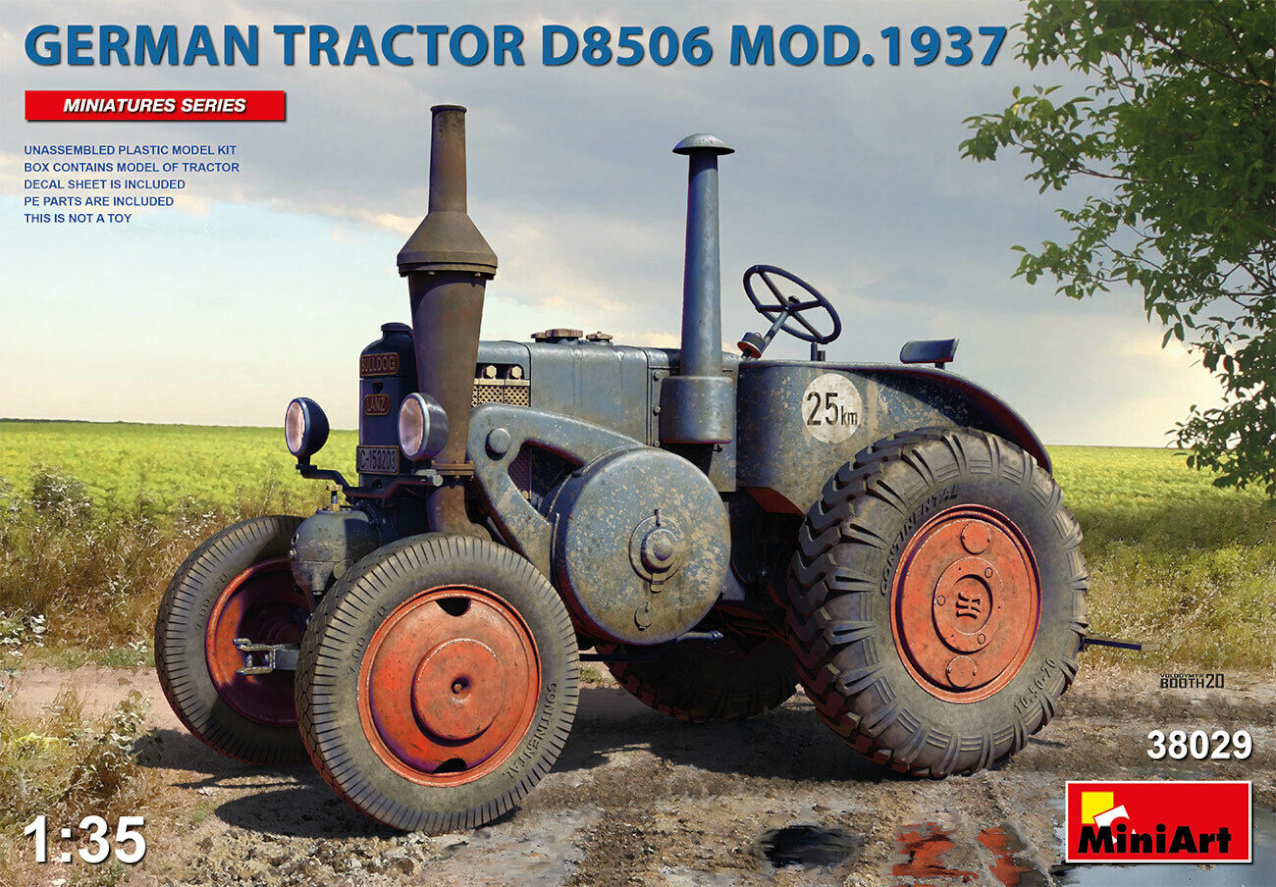
Miniart have released several boxings of the Bulldog whilst avoiding the use of any brand names. Kits are available of the 1936ish agricultural tractor with either steel wheels or rubber tyres. There are also highway versions featuring a swept back drivers cabin that was clearly required for the high driving speed. Both rubber tyred versions are available boxed with a pneumatic tyre trailer, one with a figure set. Being an aggy tractor, it is naturally quite a small kit so there is not much to it. It includes a small PE fret including the name plates, a clear sprue for headlights, eight small parts sprues and two tyre centres. Four of these sprues are for the tyres.
Construction starts with the gearbox and cylinder. The bulldog had a horizontal single cylinder engine so the layout of engine components is not what you’d expect on a normal tractor.
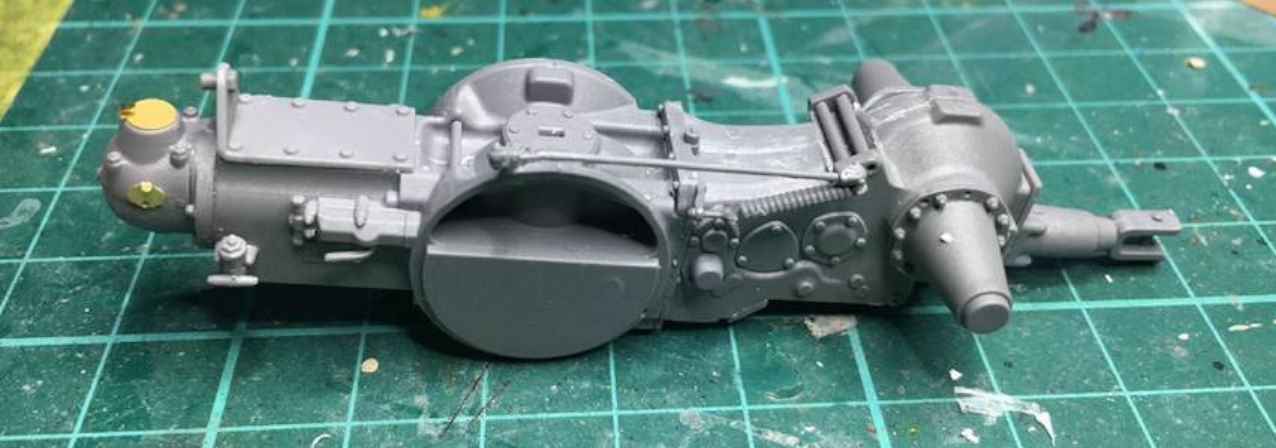
Both components are made up from two vertical halves which are then attached together via a dividing plate. There are some small fuel system parts added that require some really tiny holes to be drilled to allow for fuel pipes to be added later. To this assembly, some wheel mounts are added to the rear and the hot bulb is added to the front. The hot bulb also has three small PE covers and some tiny bolts added.
Next, the bonnet is built and attached to the transmission. This bonnet has some large radiators in each side and three tanks caps at the top and is followed by various connecting rods, levers and pedals at the driver’s position. These are followed by the wheel guards, air intake, exhaust stack and front axle, all of which are straight forward apart from some tiny PE here and there.
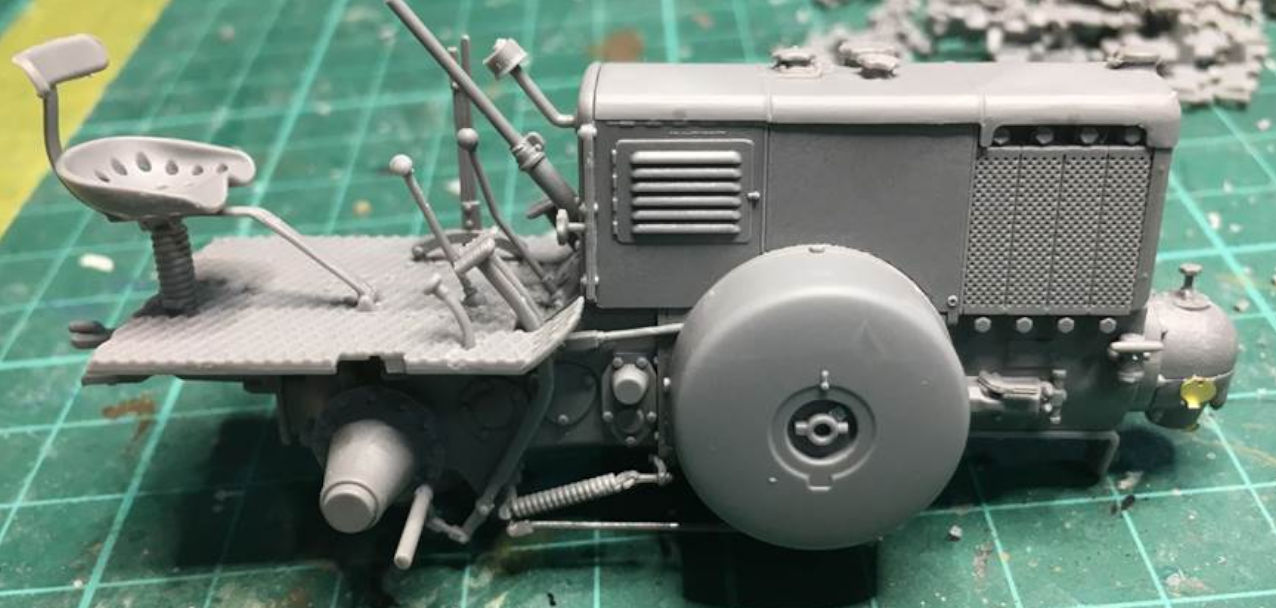
Three tiny pipes need to be added (to the holes drilled earlier).
The last step is to add the tyres. The front tyres are made up of five layers and the rear made up of three. The rears are directional so one side is built with the centre tread in the opposite direction. The front tyres are the only area with problematic fit on the whole kit. The outer layers do not seem to sit well. The inner layers are fine. I suspect that if the locating pins were shaved off flush with the middle layers, the fit would be better. (I should build another to test this theory.)
The recommended schemes are for a green tractor in the Netherlands somewhere between 1939 and 1951, or for a blue-grey tractor in East Prussia between 1938 and 1945. Both with red-brown wheels. The factory standard colour was grey. Blue appears to be the most popular colour for the resto crowd. Being a civilian vehicle, it could be any colour you like.
I started by priming all metal parts with Gunze metal primer. I then sprayed on some Tamiya Nato black to the tyres, the underside and all the little nooks and crannies that would normally be in shadow. The body was spray painted in Tamiya XF26 Deep Green and the exhaust in XF52 Dark earth. The wheels where painted in XF64 Red brown. I also used a bit of red brown to rust up the exhaust stack and for a bit of weathering whilst it was in the airbrush. The radiators were painted in XF60 German yellow. These radiators were made of brass but I highly doubt that Farmer Franz spent too much time polishing them so they should look old and tarnished.
The decals are applied next, not that there are many but some are really tiny. Fortunately, Miniart provide some spares for the decaling challenged (me). The etched brass nameplate on the front was carefully dry-brushed so the name was legible. Finally the whole lot was weathered to represent a machine that had been scratching dirt for a couple of decades.
This is a really good kit. The fit of parts is excellent. The PE fits where it should. There are some really small and thin parts that need delicate trimming. The micro-plumbing was a bit testing, but that’s on me rather than the kit. Overall, it was a fun build of an unusual subject.
